
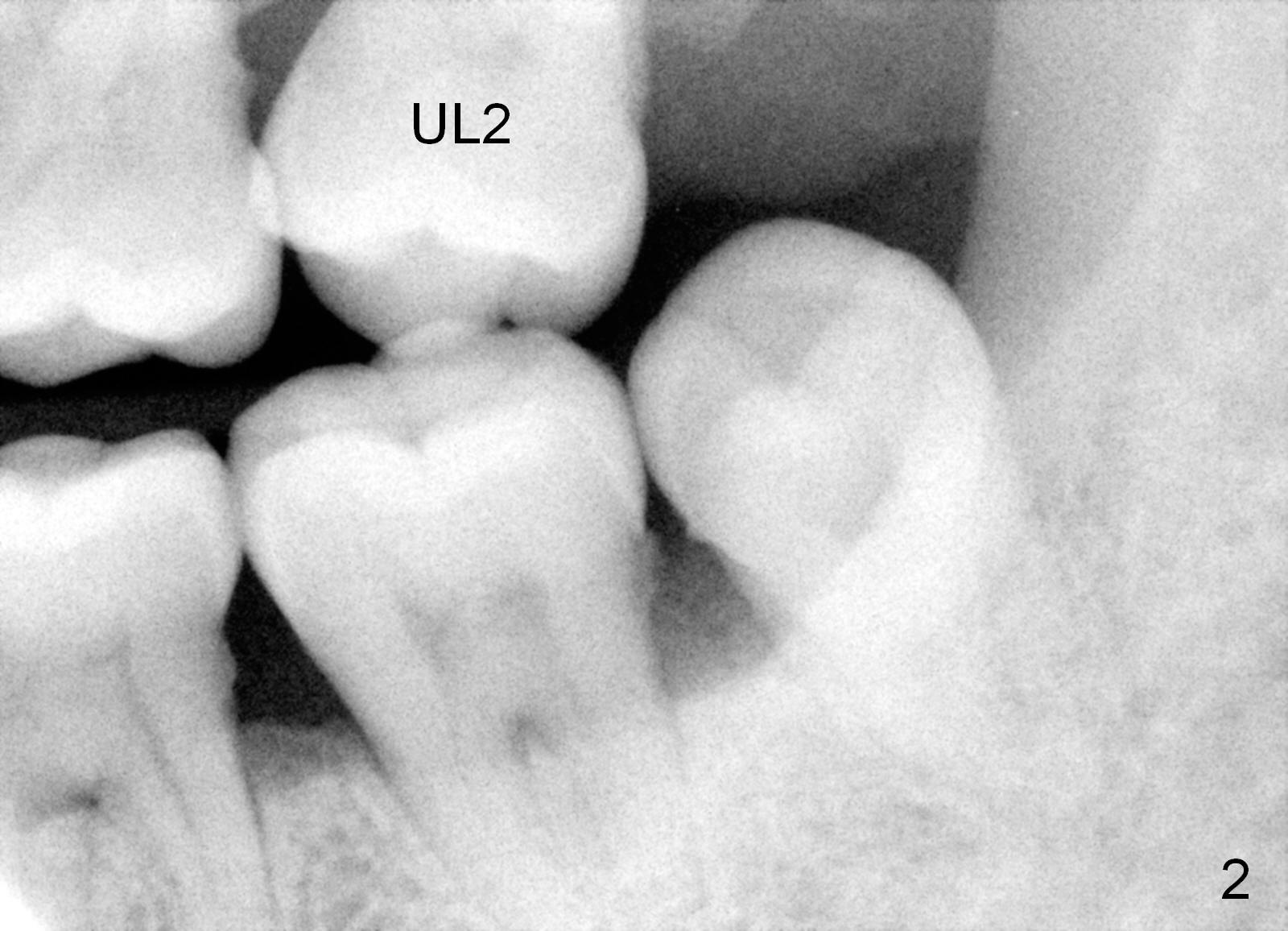
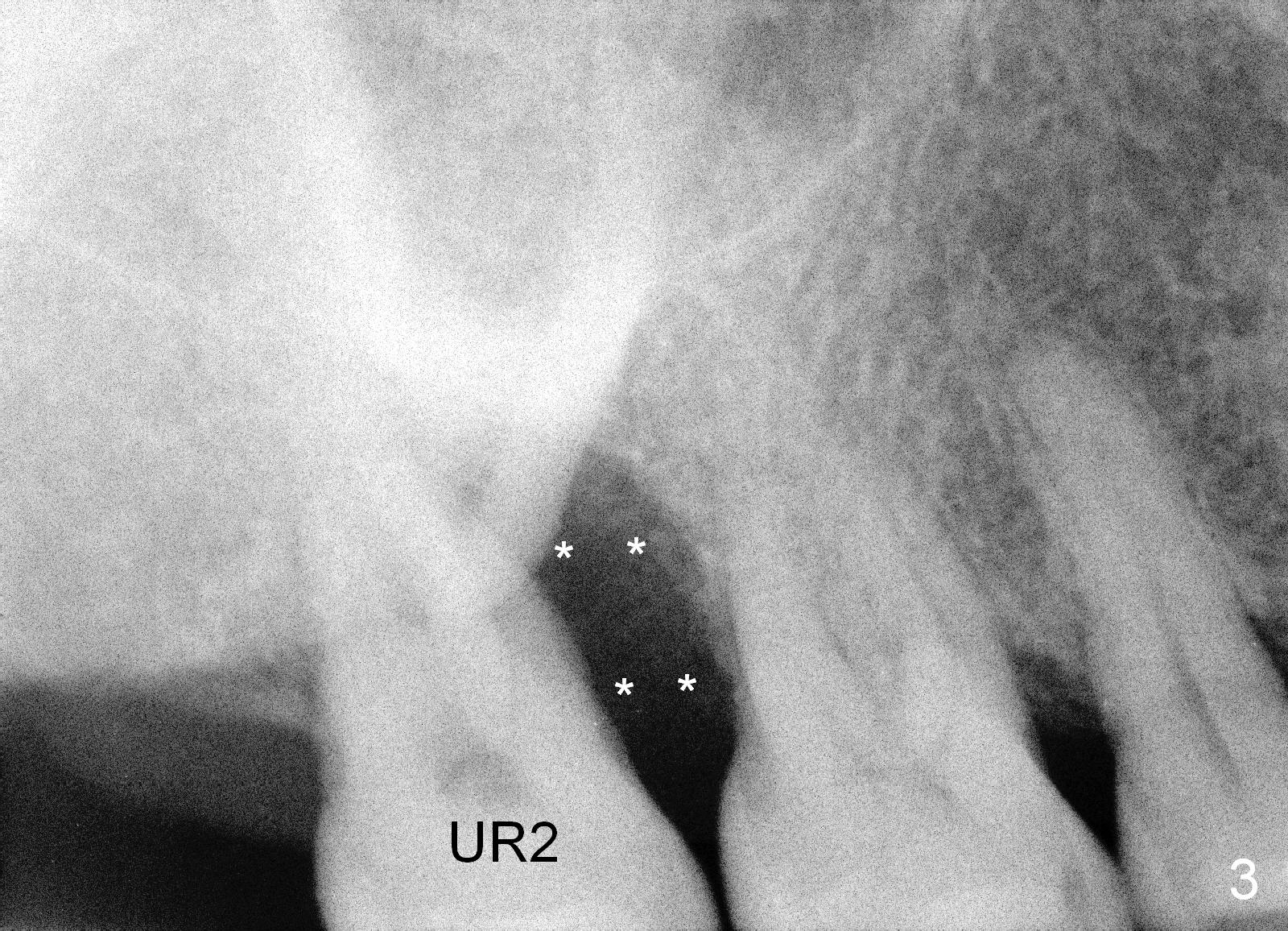
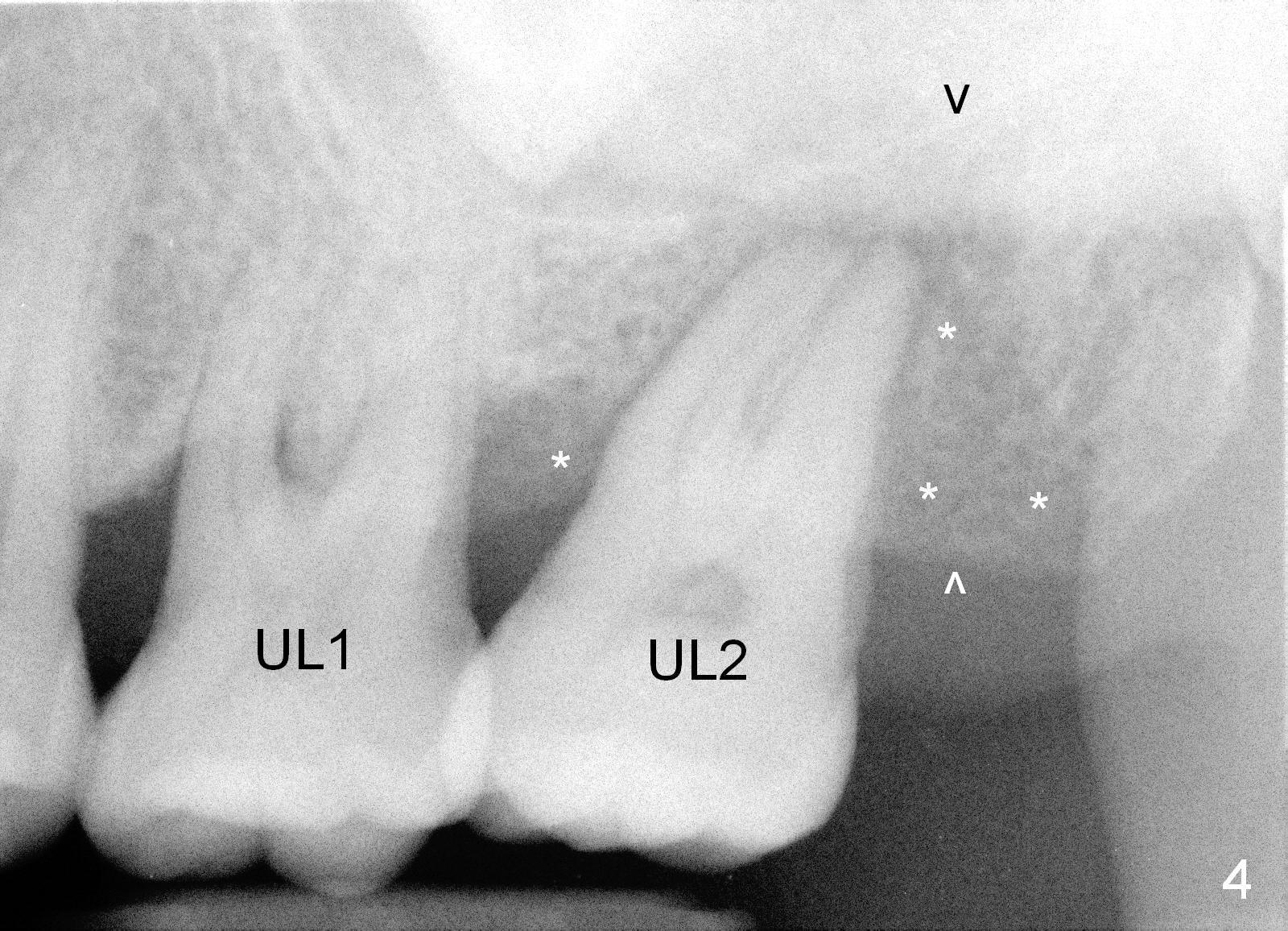
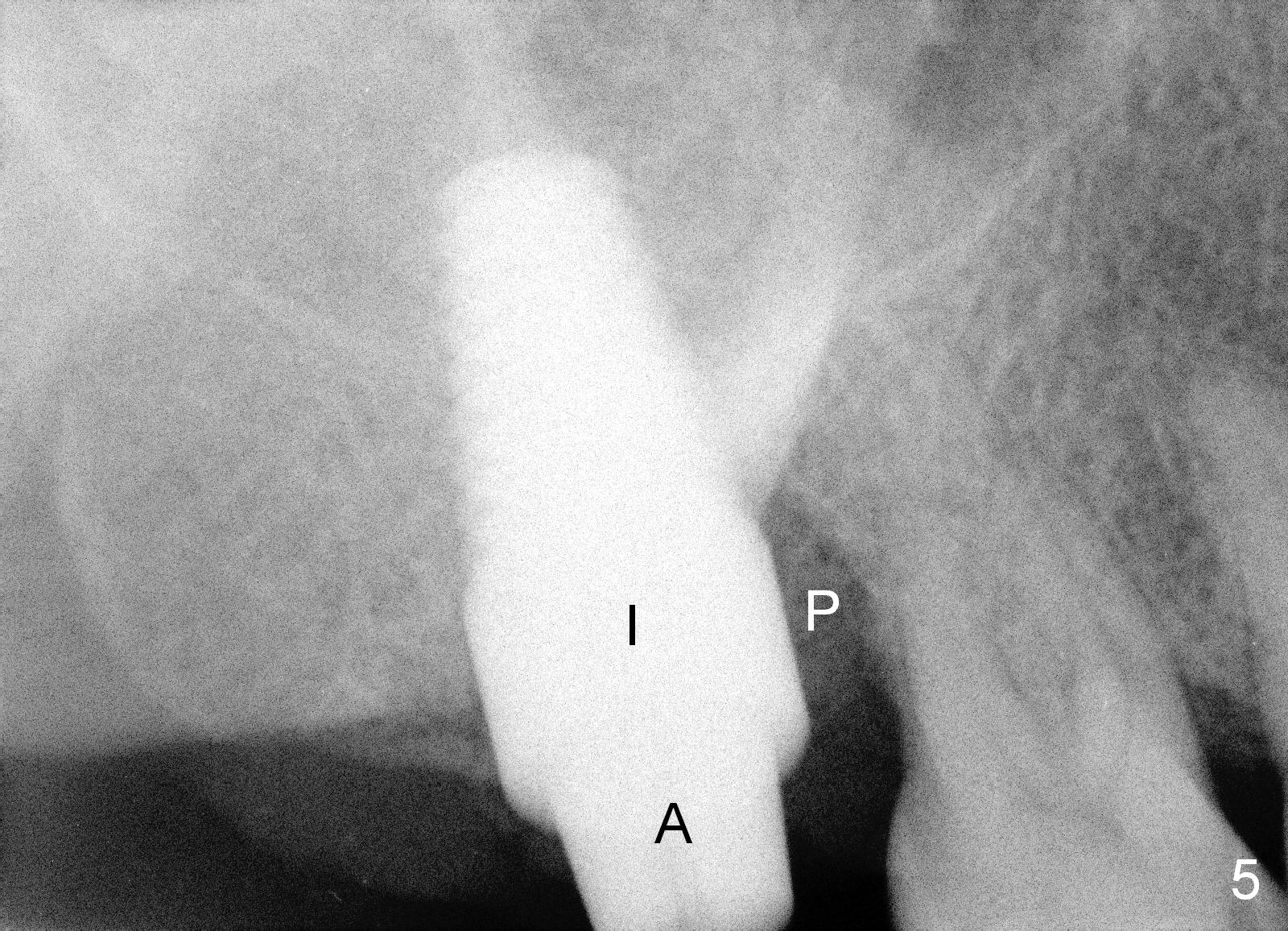
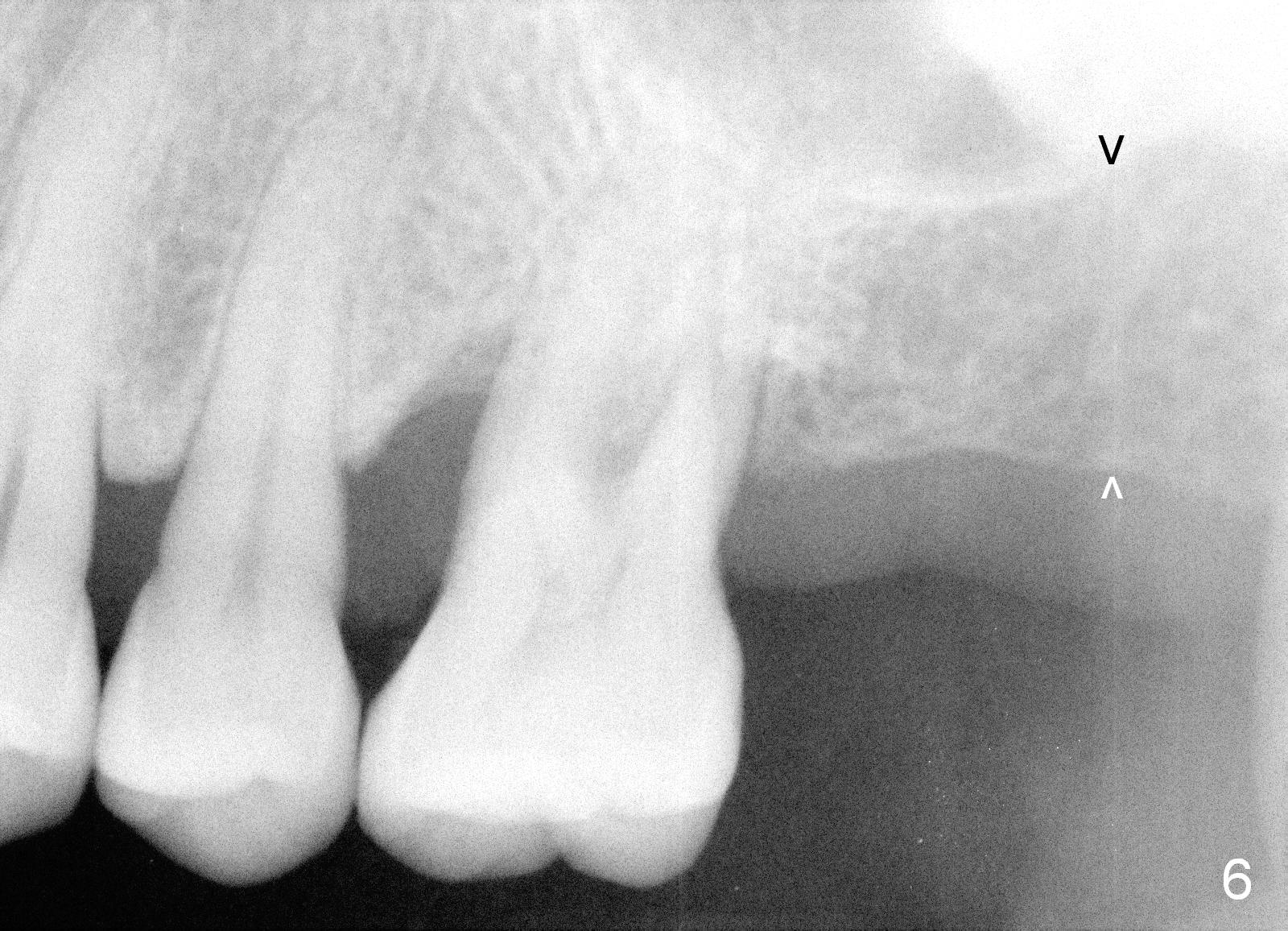
 |
 |
 |
 |
 |
 |
Do not Have a Tooth Extracted without an Immediate Implant
Julie is a typical patient who is afraid of dentistry. She came to our office with severe gum disease 7 years ago. The lower right 2nd molar had been missing (Fig.1 LR2), while the upper right 2nd molar shifted back (arrow). Her main issue was that the upper left 2nd molar was quite loose and painful (Fig.2,4 UL2 with severe bone loss (*)). The tooth was extracted with expectation to return for implant in 6-8 weeks.
When she returns 7 years later, the upper right 2nd molar (Fig.3 UR2) has an abscess with severe bone los (*). She refuses to take antibiotic for infection control, but agrees to have immediate implant (Fig.5 I) because of 1-staged surgery. The long and large implant and bone powder (P) fill the big gap. She is doing quite well after surgery; pain goes away quickly.
The bone height at the site of UL 2 reduces from 12 mm (Fig.4 between arrowheads) to 7 mm (Fig.6) in 7 years. An implant will be shorter. What X-ray cannot show is the decrease in the bone width after extraction. Therefore the implant at UL2 will be also smaller in size (diameter). The most important is that this type of implant (non-immediate) is associated with more pain, more trauma. In one word, do not have a tooth pulled without an immediate implant.
Return to
Implant
Xin Wei, DDS, PhD, MS 1st edition 04/22/2015, last revision 04/26/2015